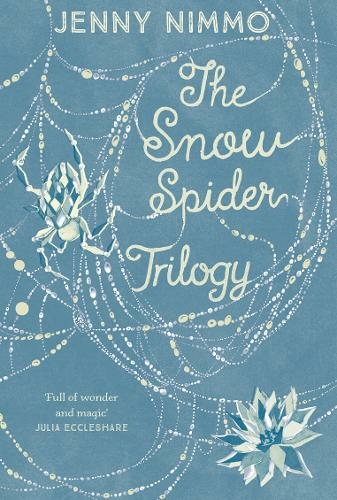

In Jenny Nimmo’s The Snow Spider young Gwyn discovers he is a magician. Nevertheless, Bran’s persona here as a modern incarnation of Arthur, the hero who will defend Britain against the Dark once more, is strengthened by the presence of Cafall. Whether Cafall is Arthur’s own dog reborn, or he just senses the presence of his modern master’s father, is left deliberately ambiguous in this extract. He did not move an inch forward, as if obeying some inner instruction that told him his place, but his tail waved furiously from side to side as it never waved for anyone but Bran.

He said, astonishingly, ‘Cafall?’Īt Bran’s side the white dog stood erect and quivering. The lord in the sea-blue robe leaned forward a little from his throne they glimpsed a keen, strong face and a pointed grey beard. Inside Craig yr Aderyn, when Will, Bran and Cafall stand before the Three Lords, the true identity of one of the Lords is revealed because he exclaims his recognition of the dog:

In both texts, Cafall takes part in the hunting of the legendary boar Troyt/Twrch Trwyth by Arthur and his men. Not much is known about this shadowy figure, but Bromwich (whose book on the Triads Susan Cooper read) hypothesises that “Lacheu appears to have belonged to an early stratum of Arthurian tradition in Wales.” In making Bran Davies the son of Arthur, therefore, Cooper is not quite inventing a new tradition, as breathing new life into a very old one.Ĭafall is the name of Arthur’s dog not only in the “mirabilia” section of the Historia Brittonum, but also in the tale of “Culhwch and Olwen” found in the Mabinogion.

In the “mirabilia”, Arthur’s son’s name is Amr, while in another medieval text, the Welsh Triads, his name is Lachau or Lacheu. Both became central ideas in The Grey King. There are two main Arthurian references in the “mirabilia”: Arthur’s dog, Cafall, and Arthur’s son. The “mirabilia,” a list of “wonders” of Britain appended to the main text of the Historia, give us a sense of the traditions of Arthur in medieval Welsh folklore. One of the texts I consider central for Cooper’s re-imagining of Arthur is the Latin Historia Brittonum (History of the Britons) of c. Susan Cooper’s The Grey King (and, later, Silver on the Tree), offers us a vision of “the Arthur of the Welsh”. In this post, I’d like to share some examples of Welsh legend and folklore that inspired central elements in both novels. Among my chosen texts are two much-loved Tir na n-Og Award winners: Susan Cooper’s The Grey King (1976) and Jenny Nimmo’s The Snow Spider (1987). In my recent book, Celtic Myth in Contemporary Children’s Fantasy: Idealization, Identity, Ideology (Palgrave Macmillan, 2017) I explored children’s and young adult fantasies ranging from the 1960s to today, discussing their inspirations in “Celtic” myth, both Irish and Welsh.


 0 kommentar(er)
0 kommentar(er)
